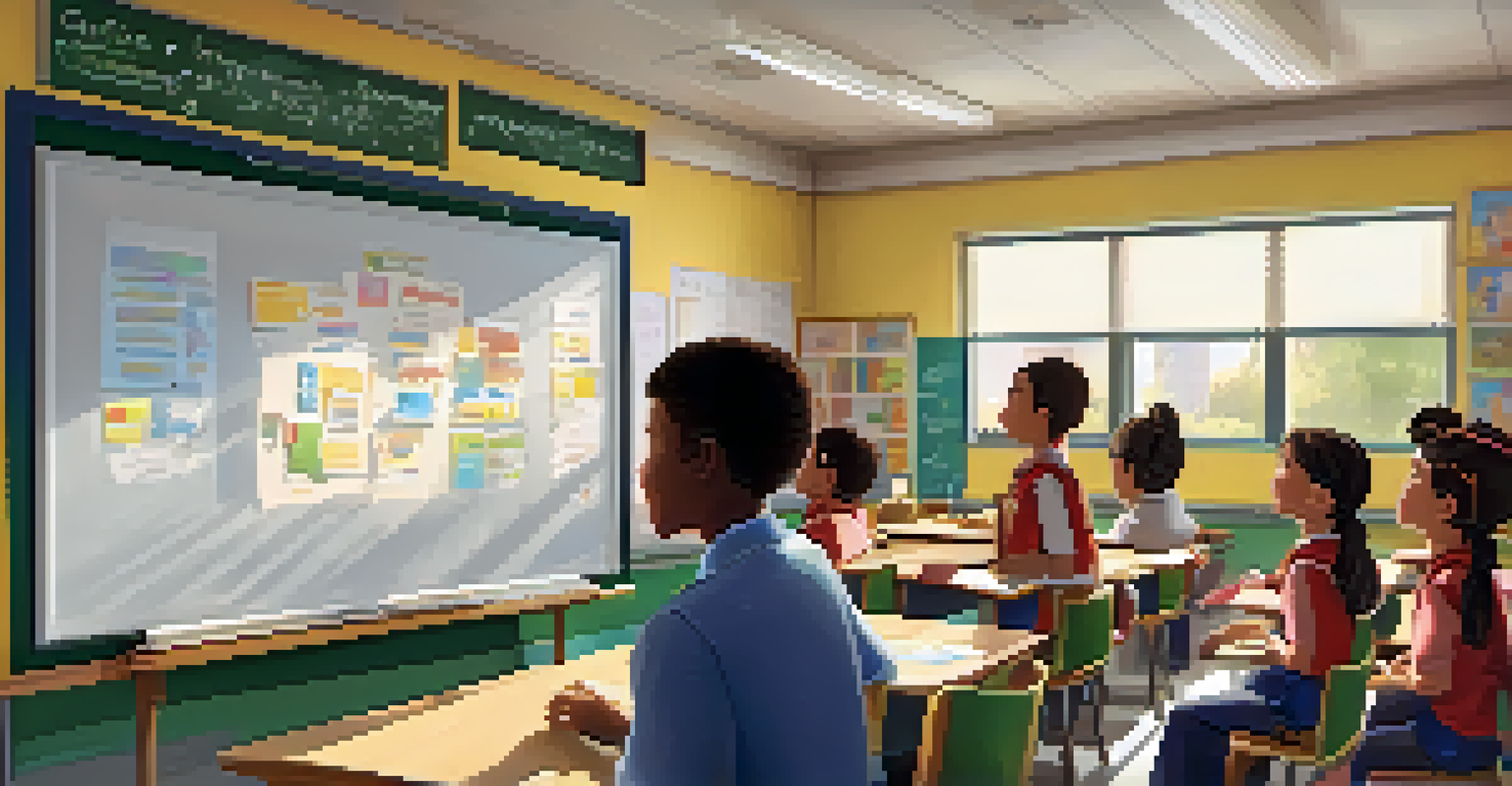Designing Flexible Learning Schedules in Blended Education

Understanding Blended Education and Its Importance
Blended education combines traditional face-to-face instruction with online learning, creating a versatile approach to education. This method caters to diverse learning styles and needs, ensuring that all students can engage effectively. By incorporating both in-person and digital elements, educators can enhance student participation and retention.
Education is not the filling of a pail, but the lighting of a fire.
Flexibility is at the heart of blended education, allowing learners to progress at their own pace. This adaptability not only fosters independence but also encourages a deeper understanding of the material. As students navigate their learning journeys, they can choose when and how to engage with content, making the experience more personal.
Incorporating technology in this hybrid format is crucial, as it provides resources that support varied learning preferences. For instance, visual learners may benefit from video content, while others might prefer interactive quizzes. By designing a flexible learning schedule, educators can create an inclusive environment that addresses the unique needs of every student.
The Role of Flexible Learning Schedules
Flexible learning schedules are essential in accommodating students' differing obligations and learning paces. For example, a student balancing work and study can choose to complete assignments during evenings or weekends, rather than adhering to a rigid timetable. This freedom can significantly reduce stress and improve academic performance.

Moreover, flexibility allows educators to respond to unforeseen circumstances, such as illness or family emergencies. When students can adjust their learning schedules, they are less likely to fall behind. This responsiveness creates a supportive educational environment where students feel valued and understood.
Blended Education Enhances Learning
Combining traditional and online learning methods caters to diverse student needs and promotes engagement.
Ultimately, flexible learning schedules promote a culture of accountability among students. They learn to manage their time effectively and take ownership of their learning, skills that are invaluable in both academic and professional settings. This empowerment is a key factor in fostering lifelong learning habits.
Creating an Effective Flexible Learning Framework
To design an effective flexible learning framework, educators should begin by assessing the diverse needs of their students. Surveys and interviews can provide insights into students' preferences, learning styles, and external commitments. This foundational knowledge is vital for tailoring a schedule that accommodates everyone.
The ability to learn faster than your competitors may be the only sustainable competitive advantage.
Next, it’s important to establish clear expectations and guidelines for students. While flexibility is essential, students also need structure to navigate their responsibilities. By providing a framework that outlines deadlines and resources, educators can guide students while still allowing room for personal adaptation.
Lastly, ongoing communication between instructors and students is crucial to maintain engagement and accountability. Regular check-ins can help identify any challenges students may face, allowing for timely adjustments to their schedules if needed. This collaborative approach fosters a positive learning atmosphere where feedback is welcomed and acted upon.
Technological Tools for Flexible Learning
In today's digital age, various technological tools can facilitate flexible learning schedules. Learning Management Systems (LMS) like Canvas or Moodle allow students to access course materials anytime, anywhere. These platforms provide a centralized location for assignments, discussions, and resources, making it easier for students to organize their time.
Additionally, video conferencing tools such as Zoom or Google Meet enable real-time interaction between educators and students, regardless of their physical location. This technology supports synchronous learning opportunities, allowing for live discussions and collaboration even when participants are not in the same room. The blend of synchronous and asynchronous methods enriches the learning experience.
Flexibility Boosts Student Success
Flexible learning schedules empower students to manage their time effectively, reducing stress and enhancing academic performance.
Moreover, productivity apps like Trello or Todoist can help students manage their tasks and deadlines effectively. By utilizing these tools, students can prioritize their responsibilities and create personalized schedules that accommodate their unique lifestyles. Technology thus plays a pivotal role in enhancing the flexibility of blended education.
Challenges in Implementing Flexible Schedules
While designing flexible learning schedules offers numerous benefits, it also presents challenges. One major issue is the potential for students to procrastinate or mismanage their time without a structured environment. Educators must be vigilant in providing guidance and support to help students develop good time management skills.
Another challenge is ensuring consistency in communication and expectations. With students working at different paces, it can be difficult to maintain a cohesive classroom environment. Finding the right balance between flexibility and accountability is crucial to avoid confusion and frustration among students.
Lastly, technology-related barriers can hinder the effectiveness of flexible learning schedules. Not all students may have access to reliable internet or devices, which can create disparities in learning opportunities. Educators must consider these challenges and strive to find solutions that ensure all students have the resources they need to succeed.
Engaging Students with Flexible Learning Options
Engaging students in a flexible learning environment requires innovative approaches that cater to diverse interests and learning styles. One effective strategy is to offer a variety of learning activities, such as videos, podcasts, and interactive simulations. This approach keeps students motivated and encourages them to explore content in ways that resonate with them.
Another way to foster engagement is by encouraging students to take an active role in their learning process. Allowing them to choose projects or assignments that align with their passions can boost enthusiasm and investment in their education. When students feel a sense of ownership, they are more likely to remain engaged and committed to their studies.
Technology Supports Learning Flexibility
Utilizing tools like Learning Management Systems and video conferencing fosters accessibility and collaboration in education.
Additionally, incorporating collaborative projects can enhance the learning experience. Flexible schedules provide opportunities for students to work together across different time zones or locations. By fostering collaboration, educators can create a vibrant learning community, even in a blended format, where students feel supported and connected.
Measuring Success in Flexible Learning Environments
To gauge the effectiveness of flexible learning schedules, educators should establish clear metrics for success. This can include tracking student engagement, completion rates, and academic performance. By analyzing these metrics, educators can gain valuable insights into what works and what needs improvement.
Feedback from students is also crucial in measuring success. Conducting surveys or focus groups can provide educators with a deeper understanding of students' experiences and challenges. Listening to student voices ensures that their needs are being met and helps to refine the learning process further.

Finally, continuous assessment and adaptation are key components of a successful flexible learning environment. As trends and technologies evolve, so too should the strategies used to engage students. By remaining flexible and responsive, educators can create a thriving learning atmosphere that meets the changing needs of their students.